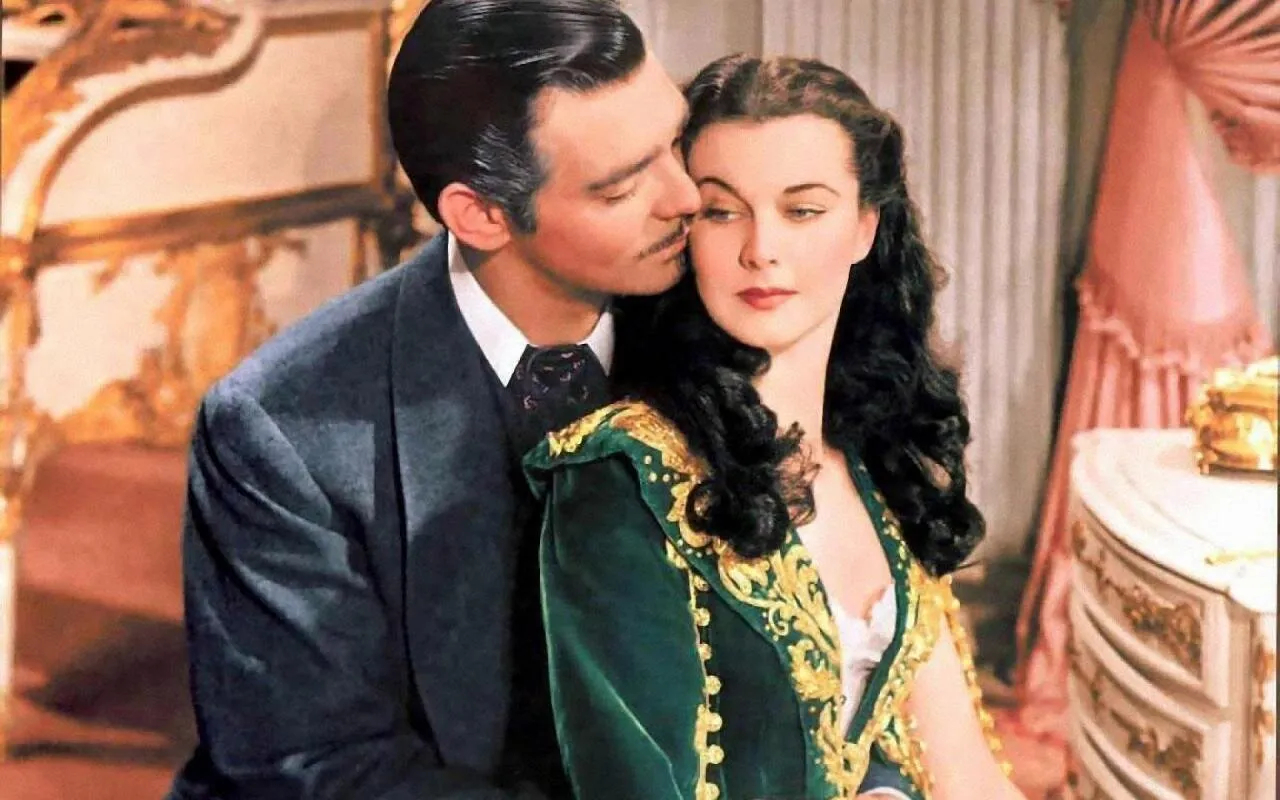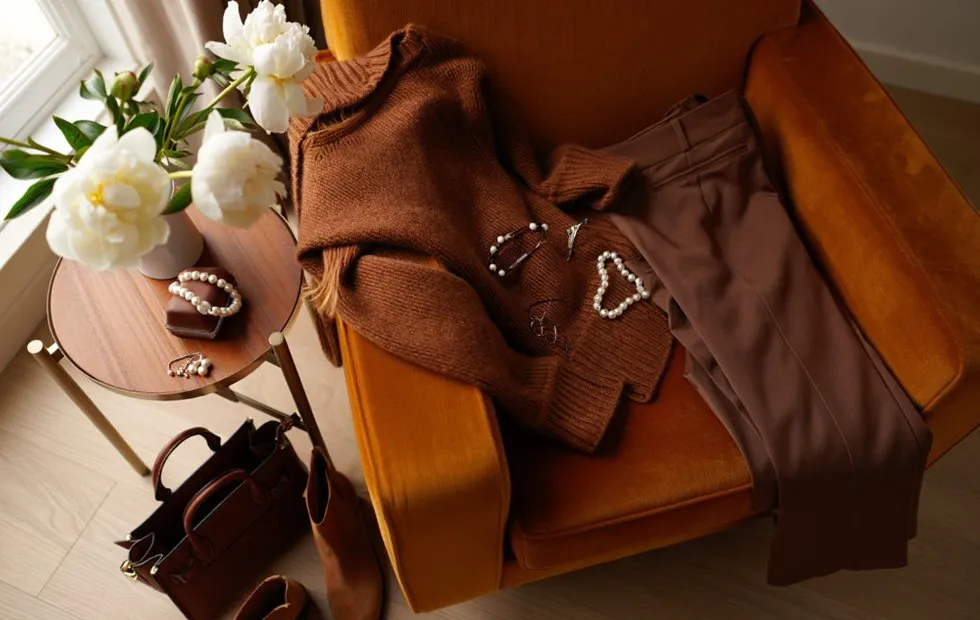There can be your advertisement
300x150
Gone with the Wind: Scandals and Secrets of the Most Expensive Film of the Era
How cinema can influence public consciousness — and how public consciousness can reshape cinema
December 1939. The elite of America gathered in the largest Atlanta cinema for the premiere of a film that was supposed to be a decade-defining event. Gone with the Wind truly conquered the world, but behind the scenes, a real drama was unfolding. A two-year casting among over 1,500 actresses, actual fires on the set, and racial conflicts that still echo today — the story of creating this masterpiece is full of unexpected twists.
Main points from the article:
- More than 1,400 actresses auditioned for the role of Scarlett O'Hara, with 400 invited for a second casting;
- The Atlanta fire was filmed naturally — they set fire to sets from King Kong and other films;
- Clark Gable canceled racial segregation on set, threatening to leave the project;
- The film cost a record $4 million — the most expensive production of the Great Depression era;
- In 2020, HBO temporarily removed the film from its catalog due to accusations of romanticizing slavery.
The Casting of the Century: 1,400 Applicants for One Role
When producer David O. Selznick bought the rights to Margaret Mitchell's novel for $50,000, he understood that finding the perfect Scarlett O'Hara would not be easy. But the scale of the search exceeded all expectations.
1,400 candidates participated in casting, including stars such as Norma Shearer, Joan Bennett, Tallulah Bankhead, Miriam Hopkins, and Katharine Hepburn. The favorite was the brilliant Bette Davis, but she was under contract with Warner Bros. The studio was willing to release her, but only if the leading male role went to Errol Flynn. Davis refused, finding Flynn too feminine.
Author Margaret Mitchell initially proposed Katharine Hepburn for the lead role. Vivien Leigh was cast by accident after numerous auditions with other famous Hollywood actresses — the 'American girl' was played by an Englishwoman.
According to rumors, Vivien was so obsessed with getting the role that her lover Laurence Olivier spoke of her 'demonic persistence.' One of the film's directors later admitted that Vivien on set was 'charged with electricity and possessed by the devil.'

The Fire That Couldn't Be Reproduced
The first scene filmed for the movie was Scarlett and Rhett's escape from the burning Atlanta. And it was a real fire — not computer graphics, which did not exist in 1939.
The studio management set fire to an entire 'block' of sets left over from other films: King Kong, The Last of the Mohicans, and Little Lord Fauntleroy. A giant fire spread across 40 acres, managed by hundreds of decorators, and even the Los Angeles Fire Department stood ready.
This is still considered 'one of the wildest shoots in Hollywood history.' Selznick had only one chance to film this hell — reshotting the scene would have been extremely expensive and labor-intensive.
An interesting detail: at that time, the actress playing Scarlett had not yet been confirmed and was played by an unknown actress. Dancers played main characters, as casting still continued.
The Star Who Ended Segregation
Clark Gable was quickly cast as Rhett Butler — the producer had dreamed of him. But initially, the actor resisted, unwilling to participate in a 'female romance.' He was convinced with a generous salary and public opinion polls, where 80% of respondents named him the perfect candidate.
Clark Gable canceled segregation on the set of Gone with the Wind. The film's cast included many African Americans, so infrastructure was divided between white and Black employees.
When Gable arrived on set and saw the sign 'Colored,' he flew into a rage and called the director: 'If you don't remove them, you'll lose Rhett Butler.' Gable got his way — racial separation on set was eliminated.
Rumors say Gable had dental prosthetics issues, causing an unpleasant smell from his mouth. Vivien Leigh later admitted: 'Clark Gable's kiss in Gone with the Wind was not that exciting.'
The Most Expensive Film of the Great Depression
The film cost four million dollars — more than any other movie made before it. Gone with the Wind was the most expensive film of the Great Depression.
In total, 59 actors and over 2,000 extras were involved in filming, along with 1,100 horses, 375 other animals, and 450 carriages and carts. For Vivien, 31 dresses were sewn based on artist Walter Plunkett's sketches.
Gone with the Wind became one of the first full-color films in cinema history. Color film didn't enter everyday life until the 1960s, making this picture a true technical breakthrough.
According to some sources, eight versions of the script were worked on, and three directors changed during filming. The main director was Victor Fleming, but he had help from George Cukor and Sam Wood.
Racial Issues: From Oscar to Ban
Paradoxically, Gone with the Wind featured the first African American woman to win an Oscar — Hattie McDaniel for Best Supporting Actress. However, even in that case, no exception was made from segregation rules: the laureate sat separately from her white colleagues at the ceremony.
The film was criticized from the start for romanticizing slavery in the South. The main complaint is that the movie portrays pre-war plantation life as an idyll, and slavery as a 'natural' order. Black characters are often depicted in outdated, humiliating roles.
In June 2020, amid protests against racism in the U.S., streaming service HBO Max temporarily removed the film from public access. The movie was later returned, adding introductory comments by historians about its problematic nature.
The reason for removal was a column by screenwriter John Ridley of 12 Years a Slave in Los Angeles Times, calling for the film's removal because it 'offers painfully stereotypical depictions of people of color.'

Photo from the site: dobro.press Legacy That Surpassed Time
Gone with the Wind gained incredible popularity after its premiere, becoming the highest-grossing film and holding the record for over 25 years. Accounting for inflation, it remains the highest-grossing film in history with grosses over $3.7 billion.
The film won 10 Oscars — a record that lasted decades. The movie became part of pop culture and was named one of the greatest films of all time.
Interestingly, only two actors witnessed real events from the Civil War: Harry Davenport (Dr. Meade) and Margaret Mann (nurse in a hospital). Ironically, Olivia de Havilland, who played fragile Melanie, lived the longest — until age 104, passing away in 2020.
Debates around Gone with the Wind continue today. But regardless of ideological disagreements, this film remains a testament to how cinema can influence public consciousness — and how public consciousness can reshape cinema. The story of Scarlett O'Hara has lived for eight decades, and it seems like it will continue to stir passions — just as intense as the heroine herself.
More articles:
 Colors That Will Change Your Wardrobe: Key Trends for 2025/26
Colors That Will Change Your Wardrobe: Key Trends for 2025/26 Brezhnevks: How They Improved Khrushchevks and Why People Still Love Them
Brezhnevks: How They Improved Khrushchevks and Why People Still Love Them Why Plishetskaya Looked Better at 70 Than Modern Stars at 30
Why Plishetskaya Looked Better at 70 Than Modern Stars at 30 How to Fit Everything in 35 sq m: Stylish Design of a Small Studio
How to Fit Everything in 35 sq m: Stylish Design of a Small Studio 8 Cool Ideas for a Compact Apartment Inspired by a 35m² Studio
8 Cool Ideas for a Compact Apartment Inspired by a 35m² Studio Why Soviet Homes Had Less Dust
Why Soviet Homes Had Less Dust 10 Trendy Finds to Refresh Your Interior
10 Trendy Finds to Refresh Your Interior 8 Successful Design Solutions We Borrowed from the Most Functional and Aesthetic Two-Room Apartment
8 Successful Design Solutions We Borrowed from the Most Functional and Aesthetic Two-Room Apartment